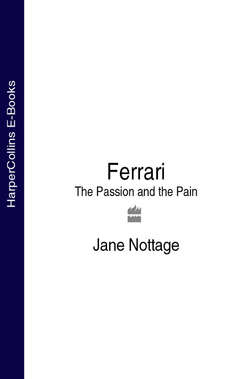Читать книгу Ferrari: The Passion and the Pain - Jane Nottage - Страница 13
THE SEASON BEGINS
ОглавлениеIRVINE’S THIRD PLACE IN AUSTRALIA WAS A BONUS
And so the team arrived in Melbourne, albeit feeling far from confident. But everyone was in for a pleasant surprise. Things were not quite as bad as they thought. They had feared being right off the pace and a long way down the grid or, even worse, being unreliable and only lasting a few laps. But they put on a good show, even though there were problems.
Williams, as predicted, outshone everyone, with Jacques Villeneuve and Damon Hill on pole position and second respectively. But Ferrari did well: Michael Schumacher qualified fourth and his team-mate Eddie Irvine started third on the grid.
For Chief Engineer Giorgio Ascanelli, the team really was living on a wing and a prayer in Australia. Ascanelli is in charge of the team at the race track; he talks to the drivers and their race engineers about race strategy and set-up, but ultimately it is his decision. He is responsible for directing the whole operation and so he has the weight of Italian hopes and fears placed squarely on his shoulders. He is an emotional, volatile character but is also strong and direct which helps him to cope.
Ascanelli doesn’t mince words or suffer fools gladly. As he says, ‘Leading a team of people is more difficult than managing objects. In Formula One speed is essential and there isn’t time for diplomacy and politics. The pressure on Ferrari is greater than in other teams as the success of Ferrari has an effect on every aspect of Italian life, including the government and the humour of the people. When the Italian football team won the 1982 World Cup, it gave the Italian people and the economy a real lift.’
Like most of his colleagues at Ferrari, Ascanelli is a fervent believer in stability. ‘It has been difficult for people to come in after Enzo Ferrari and we have struggled to maintain some sort of stability. Williams has become strong through building up a team that can work together. Its team doesn’t change much from year to year. I believe stability is very important. There is an intrinsic amount of information in a person’s head and because we are all so busy we just don’t have time to pass everything on to a new person.’
Race strategy and set-up is a complex business. The first is as much about outfoxing your opponents as taking external elements into consideration; the latter is based on many different factors: aerodynamics, engine mechanics and tyres, for example. Then there is the question of driver style. A lot of drivers have to work at being quick, but for Michael Schumacher it just comes naturally, so it allows him to release a lot of mental power on thinking about the race. ‘However,’ says John Barnard, ‘where Schumacher really scores is that he has the ability to impress a calmness on the team even when things aren’t going well.
Schumacher is, of course, not without his weaknesses, and like many people the things that make him brilliant can also work against him. His determined, focused approach is helping Ferrari to concentrate its resources and work out problems, but he doesn’t take on new ideas very easily. Barnard laughs as he says, ‘If you can explain things logically to him, he’ll take it on board, but if it is a hunch, getting him to change is like turning the Queen Mary. It’s not easy.’
In 1996 Ferrari was already struggling with a completely new car. In Australia the main problem was the unexpected cracking of the titanium gearbox casing. Shell, Ferrari’s technical partner, detected traces of titanium when the lubricant was analysed. It was an unpleasant surprise. Barnard says, ‘We had been running the engine in a hybrid version of last year’s car and we hadn’t seen that happening. We think the engine is vibrating badly, causing the cracking. It is the first time we’ve used a V10; we ran using a titanium gearbox behind a V12 in 1994, and we didn’t have these problems.’
There was also contention over the re-design of the cockpit area. Some teams felt that Williams and Jordan had not kept to the spirit of the new regulations drawn up to give drivers extra protection and were therefore gaining an aerodynamic advantage over other teams. Ferrari, like many others, had designed a high-sided cockpit.
Overall, the car was proving to be very difficult in terms of drivability. Irvine’s third place in Australia was a bonus, but the team returned to Maranello with a lot of work to do in the ten days before departing for the South American circuits. The races in Brazil and Argentina were not only long distance but also ‘back to back’ (a week apart), and the old gearbox had to be fitted in the car. Unfortunately, it isn’t as easy as simply replacing the new with the old. As Ascanelli says, ‘We knew there was a hell of a lot of work to do between Australia and South America. We had to have a new water system, do electrical work, bodywork, a new starter motor … and we had ten days to do it in.’
